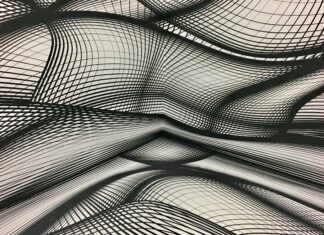Flat Warts: A Comprehensive Exploration of a Common Dermatological Condition
Warts, those small, benign growths that often appear on the skin’s surface, can take on various forms and shapes, each with its unique characteristics. One such manifestation is the flat wart, which distinguishes itself by its subtle appearance and relatively smooth texture. These seemingly innocuous skin growths, caused by the human papillomavirus (HPV), belong to a group of skin conditions that affect individuals across different age groups and demographics. While not usually a cause for medical concern, flat warts can still be a source of discomfort and self-consciousness for those who develop them. This article delves into the realm of flat warts, exploring their clinical features, causes, risk factors, and available treatment options, in order to provide a comprehensive understanding of this prevalent dermatological phenomenon.
The Characteristics of Flat Warts
Flat warts, also referred to as plane warts, present a distinct appearance compared to their more raised and rounded counterparts. These warts are typically small and smooth, with a flat or slightly elevated surface that blends with the surrounding skin. Their color can vary, ranging from flesh-toned to slightly pink, brown, or yellow. Measuring between 1 to 5 millimeters in diameter, flat warts tend to cluster in groups, forming patches that can range from a few warts to dozens. Unlike other wart types, flat warts are often found on areas of the body that are commonly shaved, such as the face, neck, hands, and legs. This predilection for hair-bearing regions can lead to increased susceptibility, especially when the skin is compromised through shaving or minor injuries.
The Intricacies of Flat Wart Formation
Flat warts, like other wart types, are caused by the human papillomavirus, which exists in various strains. Among the culprits, HPV types 3, 10, 28, and 49 have been specifically associated with the development of flat warts. The virus gains entry through the outermost layer of the skin, known as the epidermis, often via a minor abrasion or cut. Once inside, the virus targets the keratinocytes, the predominant cell type of the epidermis, and triggers their uncontrolled growth. This aberrant proliferation results in the formation of a flat wart.
It is noteworthy that not everyone who is exposed to HPV will develop flat warts. The presence of the virus alone is not sufficient; rather, various factors contribute to the susceptibility and development of these growths. Genetic predisposition, immune system function, and environmental influences play pivotal roles in determining whether a person will develop flat warts after HPV exposure. Individuals with weakened immune systems, such as those with certain medical conditions or undergoing immunosuppressive therapies, are at a higher risk of developing flat warts.
Risk Factors and Epidemiology
Flat warts are more commonly observed in children and young adults, with the prevalence peaking in the age group of 12 to 16 years. This age-related distribution is attributed to several factors, including increased physical contact in school environments, underdeveloped immune responses, and a greater likelihood of sharing personal items like towels or razors. While children and teenagers are the primary demographic affected, flat warts can also emerge in adults.
The mode of transmission for flat warts is primarily direct skin-to-skin contact. This can occur through activities such as shaking hands, hugging, or using shared personal items. Autoinoculation, a process in which warts spread from one part of the body to another, can also contribute to their proliferation. For instance, an individual with a flat wart on their hand may inadvertently transfer the virus to their face while touching or scratching.
Navigating the Diagnosis of Flat Warts
Diagnosing flat warts is often a straightforward clinical process. Dermatologists or healthcare providers can usually identify them based on their distinct appearance and location on the body. In some cases, a dermatoscope, a handheld device equipped with magnification and light, may be used to examine the wart more closely. This aids in distinguishing flat warts from other skin conditions with similar features, such as seborrheic keratoses or lentigines.
It is crucial to note that self-diagnosis of flat warts, or any skin condition for that matter, is not recommended. Consulting a qualified healthcare professional for an accurate diagnosis is essential to ensure appropriate management and treatment.
Aesthetic and Physical Implications
While flat warts are generally harmless and not associated with serious health risks, their presence can have both physical and psychological implications. Due to their location on frequently exposed areas like the face, neck, and hands, individuals with flat warts may experience self-consciousness or embarrassment. The social stigma attached to visible skin conditions can impact one’s self-esteem and quality of life. Furthermore, the physical discomfort caused by flat warts can arise from friction, irritation, or even itching, especially when they are located in areas prone to constant movement.
Exploring Treatment Options
Although flat warts can resolve on their own over time, treatment options are available for those seeking to expedite their disappearance or alleviate associated discomfort. The choice of treatment depends on factors such as the number of warts, their location, and the patient’s overall health. Some common treatment modalities include:
Topical Medications: Over-the-counter or prescription-strength creams, gels, or ointments containing salicylic acid, imiquimod, or retinoids can be applied directly to the warts. These substances work by breaking down the outer layers of the wart and stimulating the immune system’s response to eliminate the virus.
Cryotherapy: This procedure involves freezing the wart using liquid nitrogen or another freezing agent. The freezing causes the cells to die and eventually fall off.
Electrocautery: In this method, an electrical current is used to burn the wart tissue. This effectively destroys the wart and promotes healing.
Laser Therapy: Laser treatment targets the blood vessels that supply the wart, effectively cutting off its blood supply and causing it to regress.
Chemical Peels: Chemical agents like trichloroacetic acid are applied to the warts to remove the top layers of skin, gradually causing the wart to slough off.
Immunotherapy: This approach involves stimulating the immune system to recognize and attack the wart. It may include injecting antigens into the wart or applying substances like squaric acid dibutyl ester.
Preventive Measures and Conclusion
Preventing the spread of flat warts involves practicing good hygiene and avoiding direct skin-to-skin contact with infected individuals or surfaces. Simple measures like not sharing personal items, washing hands frequently, and keeping the skin moisturized and well-maintained can contribute to reducing the risk of flat warts. Additionally, individuals with weakened immune systems should take extra precautions to minimize their exposure to HPV.
In conclusion, flat warts, although benign, can present unique challenges for those who experience them. Their inconspicuous appearance and potential for self-consciousness make understanding their causes, characteristics, and treatment options essential. By shedding light on this common dermatological condition, we hope to empower individuals to make informed decisions about their skin health and seek appropriate medical guidance when necessary.
Certainly, here are five key features of flat warts:
Subtle Appearance:
Flat warts are characterized by their discreet and unobtrusive presence on the skin’s surface. They are typically small, smooth, and slightly raised or flat, often blending seamlessly with the surrounding skin.
Clustered Growth:
Unlike some other wart types, flat warts tend to appear in clusters or groups, forming patches of multiple warts. These clusters can range from just a few warts to a larger number, creating a distinctive pattern.
Hair-Bearing Areas:
Flat warts exhibit a preference for areas of the body with hair, such as the face, neck, hands, and legs. This affinity for hair-bearing skin can be attributed to factors like shaving, which can create openings for the human papillomavirus (HPV) to enter and cause infection.
Color Variation:
The color of flat warts can vary, usually appearing flesh-toned, pink, brown, or yellow. This color diversity contributes to their ability to blend in with the surrounding skin, making them less conspicuous.
Youth Predominance:
Flat warts are more commonly observed in children and young adults, with the highest prevalence occurring among individuals aged 12 to 16 years. While they can affect people of all ages, the younger demographic is particularly susceptible due to factors like increased skin-to-skin contact and underdeveloped immune responses.
Flat warts, those unobtrusive yet persistent skin growths, have long intrigued dermatologists and patients alike with their enigmatic nature. As we delve into the depths of this dermatological phenomenon, it becomes evident that their inconspicuous appearance belies a complex interplay of factors that contribute to their formation, spread, and eventual resolution. While flat warts may lack the striking characteristics of their raised counterparts, they possess a unique charm in their ability to captivate the curious minds of those who seek to understand them better.
At the heart of the flat wart narrative lies the human papillomavirus (HPV), a family of viruses encompassing a myriad of strains, each with its own distinctive properties and tendencies. While HPV may often be associated with conditions of a more conspicuous nature, such as genital warts, it finds itself equally at home in the subtle realm of flat warts. The viruses responsible for these seemingly unassuming growths belong to specific strains, including types 3, 10, 28, and 49. Their predilection for hair-bearing areas of the body, coupled with their ability to exploit minor openings in the skin’s armor, underscores the intricacy of their entry strategy.
Once HPV gains access to the epidermis, it targets the keratinocytes, the very building blocks of the skin’s outermost layer. A molecular tango ensues, as viral genes insert themselves into the host cell’s DNA, orchestrating a symphony of abnormal growth and replication. The result is the emergence of flat warts, those minuscule landscapes of hyperplastic keratinocytes that grace the skin’s canvas. These growths, although benign in nature, represent a testament to the complex choreography that unfolds within the microscopic realm.
In the realm of dermatology, the physical is often intertwined with the psychological, and flat warts are no exception. While they may lack the visual impact of their more prominent kin, they are not immune to the psychological toll exacted by visible skin conditions. The face, often referred to as the mirror of the soul, can become a battleground of self-perception for those with facial flat warts. The interplay between the seen and the unseen, the external and the internal, shapes a narrative of self-esteem and identity that transcends the physical boundaries of the skin.
As with any narrative, the plot thickens with the introduction of various characters, each playing a role in shaping the course of events. Immune system function emerges as a pivotal player, with its ability to either combat the viral onslaught or succumb to its influence. Individuals with compromised immune systems, be it due to underlying medical conditions or immunosuppressive therapies, find themselves at the mercy of HPV’s whims, often experiencing a higher propensity for flat wart development. The immune system’s delicate balance teeters on the fulcrum of susceptibility, as genetic predisposition and environmental factors sway its judgment.
In the realm of medical practice, diagnosing flat warts unfolds as a narrative of clinical acumen and observational finesse. Dermatologists, armed with their dermatoscopes and years of expertise, embark on a journey of scrutiny and interpretation. The dermatoscope’s magnifying lens unveils the subtleties of texture, color, and morphology that might escape the naked eye. Yet, even in this era of advanced diagnostic tools, the human element remains irreplaceable. The act of discerning between a flat wart and its mimicry requires a dance of knowledge and intuition, a symphony where the patient’s story harmonizes with the physician’s discernment.
Within the realm of therapeutic endeavors, the plot takes an intriguing turn, as various interventions seek to alter the course of the flat wart narrative. Topical treatments, akin to elixirs of old, are applied with hopes of inducing resolution. Salicylic acid, that humble exfoliant, takes center stage, acting as a chemical chisel to chip away at the warts’ façade. Imiquimod, a sentinel of the immune system, rallies the body’s defenders to wage war against the viral intruders. In more dramatic scenes, cryotherapy, laser therapy, and electrocautery wield their weapons of cold, light, and heat, respectively, to banish the growths from the skin’s canvas.
Yet, as with any tale of healing, the denouement is often more nuanced than a simple resolution. Flat warts, those transient chapters in the book of one’s life, may bid adieu, leaving behind tales of resilience and change. The skin, that resilient organ, often regains its equilibrium, restoring its pristine appearance. But the narrative lingers, a reminder of the intricate dance between viral invaders and the body’s sentinels, a testament to the intricacies of human biology and the artistry of medical science.
And so, the story of flat warts unfolds, a tapestry woven with threads of virology, immunology, and human experience. In their unassuming presence, these growths hold a mirror to the delicate balance between the seen and the unseen, the physical and the emotional. They beckon us to peer beyond the surface, to unravel the narrative threads that bind us to the realm of skin and self. In this exploration, we uncover not just the story of a dermatological condition, but a reflection of our own complexity and resilience in the face of the enigmatic forces that shape our existence.


















